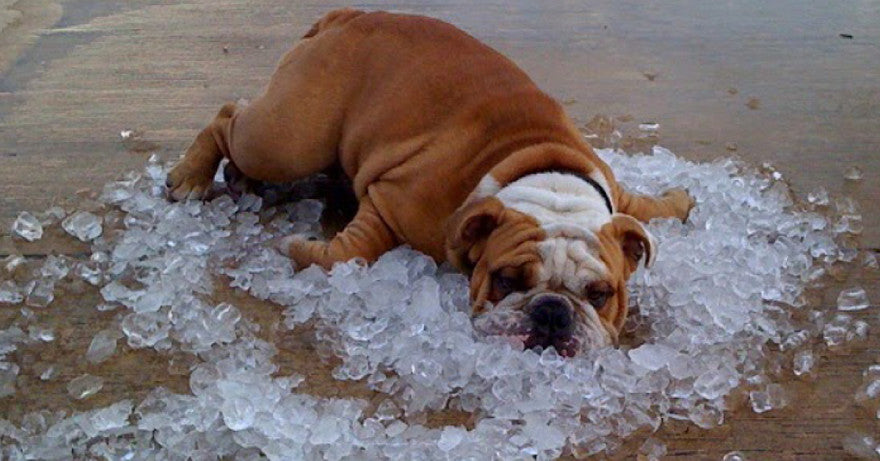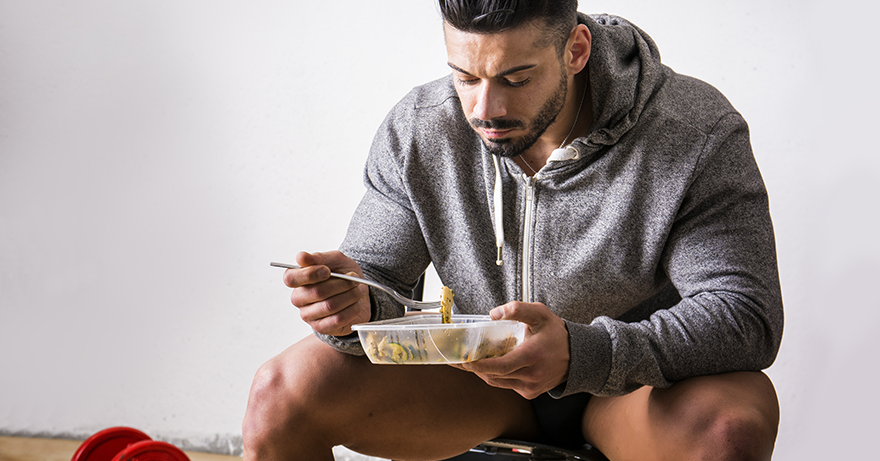Athlete's Guide to Muscle Recovery and Nutrition

You gave it your all in your morning training, grinding out that final set of eccentricenhanced squats with your chest heaving and your quads burning. In the afternoon, you hit the track for 200meter repeats until your leg muscles screamed and your lungs burned.
For sure, you’re putting in the work to get the body and performance changes you want. The question is, are you giving your body what it needs for maximal recovery from all those muscle damaging workouts?
After all, the ability to recover quickly from the strain of muscle damaging workouts is what sets the most successful athletes apart.
If you skimp on recovery, either due to poor nutrition, too much training, or an overly stressful lifestyle, your body simply won’t adapt as it should. Overuse injuries, excessive muscle soreness, reduced athleticism, and increased hunger are just a few of the effects you may experience when the underrecovery monster is on your heels.
What Is Muscle Damage?
During intense exercise, especially eccentric contractions when you lengthen the muscle, the muscle fibers experience trauma, causing muscle damage. An example of an eccentric contraction is the down motion of the squat or the biceps curl.
When muscle damage occurs, energy stores are depleted and waste products are produced. The muscles release inflammatory markers and trigger the secretion of hormones that allow your body to cope with physical training stress. Finally, muscle cells swell with liquid and genetic pathways are activated, recruiting satellite cells that multiply and donate the “daughter” cells that help regenerate damaged tissue.
This combination leads to some intense soreness and a temporary drop off in strength that persists for 24 to 72 hours post workout.
What Is Muscle Recovery?
There are four key factors that influence muscle recovery:
- Muscle and tissue repair
- Removal of waste products and reduction of inflammation
- Restoration of energy stores and nutrients
- Recuperation of the braintomuscle connection
What most people don’t realize is that these factors are interrelated. For example, recovery starts when satellite cells on the outside of muscle fibers are activated, fusing together with old muscle fibers, making them stronger and bigger. If you neglect the muscle recovery process with poor nutrition or a sedentary lifestyle, you will compromise the binding of satellite fibers to your muscles, impeding recovery.
A second example is that the body’s ability to restore energy levels in the muscle is impaired during muscle damage. This becomes a problem if you are hitting it hard day in and day out because training capacity will be reduced and you simply won’t be able to train as strenuously.
Finally, when the inflammatory factors, such as IL6, and CK, build up in response to intense muscle trauma, they can keep tissue from regenerating or adapting. Instead of getting stronger and more muscular, you get weaker, have more muscle soreness, and performance drops off.
Fortunately, recovery doesn’t have to be complicated because you can use the same simple nutrition and therapeutic strategies to target all of the muscle recovery systems at the same time. For example, high quality sleep will have a profound effect on nervous system recovery, but it’s also a game changer for improving balance of hormones that help your body recover from training stress.
What follows is a list of nutrition, therapeutic, and supplementary actions you can take today to help you achieve optimal muscle recovery:
#1: Prevent Nutrient Deficiencies
If you are deficient in certain nutrients, namely vitamin D, glutamine, magnesium, and fish oil, recovery processes in the body will be reduced.
Vitamin D mediates protein synthesis and improves muscle recovery: Take 2,000 to 5,000 daily in order to achieve a blood value of at leas 40 ng/ml.
Glutamine is an amino acid that is used in the biosynthesis of proteins. It also affects the body’s ability to replenish muscle glycogen and is implicated in prolonged muscle soreness. If you think your levels may be low, try taking 2 to 10 g multiple times a day to help the body regenerate.
Magnesium is necessary for relaxation—both muscle and central nervous system relaxation. It also improves muscle healing by interacting with the calcium that accumulates during intense muscle contractions. Take 10 mg/kg/bodyweight or apply topical magnesium cream after hard training to accelerate healing.
Fish Oil is incorporated into the outside lipid layer of cells, which allows for better cellular signaling and less inflammation. Taking 1 to 3 grams after hard workouts may increase muscle recovery by triggering protein synthesis.
#2: Adopt ProRecovery Habits
Sleep is probably the best known factor in recovery, but there are many other habits you can use to get your body and mind ready to go hard again.
Listen To Music: Non-exercise studies show listening to pleasurable music lowers cortisol and raises immunoglobulin A for better immune function. Music also directly benefits recovery. One study found that listening to music during recovery led athletes to be more active after intense exercise, which facilitated faster lactate clearance.
Do Meditation: Sitting and breathing deeply while you focus on the present moment helps regulate the hypothalamic pituitaryadrenal axis that allows you to cope with stress and recover faster from hard workouts.
Do Aerobic or Concentric Only Exercise: Any kind of exercise that gets the blood flowing will promote recovery and reduce muscle soreness. The key is to avoid motions with an eccentric component that cause additional muscle damage.
#3: Eat To Reduce Soreness
One of the most effective ways to accelerate muscle recovery is with food. By using a few simple (and delicious) nutrition strategies you can target multiple systems in the body that get beat down by training.
Blueberries, Tart Cherries & Dark Colored Fruits: Although antioxidant supplements like vitamin C and E have largely failed at improving muscle recovery, the naturally occurring phytonutrients in darkcolored fruits can significantly reduce muscle damage and pain after intense training. Scientists think the antiinflammatory compounds in these fruits help remove the waste products or “garbage” produced during hard training.
Cruciferous Vegetables: Broccoli, cauliflower, Brussels sprouts, and other green vegetables contain nutrients that help the body safely eliminate estrogen, which can impede recovery when it is present in elevated levels in the body.
HighQuality Protein: Eggs, fish, and organic meat are all complete protein sources with a high concentration of leucine —the most important amino acid for protein synthesis. They also provide other muscle recovery nutrients including antioxidants, creatine, beta alanine, and carnitine.
Almonds & Walnuts: Eating almonds daily has been shown to increase energy use and reduce oxidative stress in trained cyclists. Walnuts are also nutrientrich, may mitigate muscle soreness, and have a prorecovery effect due to their ability to improve energy use in the body.
#4: Supplement
Certain supplements can accelerate recovery processes in the body for less muscle soreness and a faster restoration of strength after killer workouts.
Curcumin: A compound derived from the spice turmeric, curcumin accelerates healing by improving cell repair and reducing inflammation. When taken orally, curcumin should be supplemented with piperine (a compound in black pepper) to improve absorption. You can also try slathering a topical curcumin cream on sore muscles after hard training.
Topical Menthol: Menthol rub has a cooling sensation on the skin that has been found to reduce muscle pain by as much as 63 percent. The one drawback is that although menthol can inhibit the brainpain connection, it won’t restore the strength loss that comes from hard training, so you need to modify training accordingly.
BCAAs: The branched chain amino acids can reduce (not prevent) muscle soreness and accelerate recuperation of strength by as much as 33 percent by increasing protein synthesis and reducing muscle breakdown. Take BCAAs before, during and after intense training for optimal muscle recovery.
Taurine: Taurine improves the water content in muscle fibers, reducing muscle damage and oxidative stress. It also aids sleep quality by activating the calming neurotransmitter GABA so that you can relax and recover. Take 1 to 3 grams of taurine daily for maximal recovery.
#5: Treat Yourself
A little bit of pampering is in order for maximal recovery and peak performance.
Coffee: One of the most effective muscle recovery tools available is caffeinated coffee. Not only does caffeine reduce DOMS muscle soreness by blocking the central nervous system’s pain receptors, it also helps restore strength loss. Timing is key though: Don’t drink caffeine postworkout. That’s when you need to focus on clearing cortisol. Instead, get your caffeine preworkout or in the morning on the day after training.
Massage/Foam Rolling: Although they won’t restore the strength lost from muscle damage, both foam rolling and massage can increase drainage of waste products from cells, while stimulating receptors on the skin for decreased pain feedback from the spinal cord. To accelerate recovery, use massage and rolling after training.
Dark Chocolate: The antioxidants in chocolate can improve blood flow by expanding the arteries for faster recovery from training. Chocolate may also improve glycogen replenishment in muscle, which could help reduce muscle soreness.
Also in Featured Articles

Cross Training Improves Fitness and Reduces Injury

7 Nutrition Hacks for Elite Performance You’ve Never Tried Before


